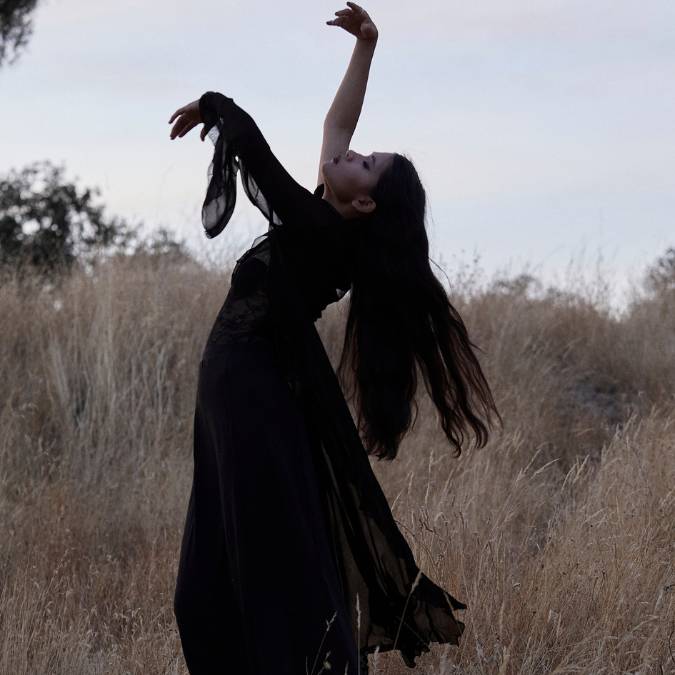
For many, Halloween is a night of carved pumpkins, spooky costumes, and stories of witches flying across the moon on broomsticks. But behind the playful decorations and Hollywood magic lies a darker and fascinating truth — the real women who inspired the witch myths. These were not evil sorceresses, but often misunderstood healers, widows, or simply nonconforming women who became victims of fear, superstition, and social control.
In this article, we’ll explore the real witches behind Halloween legends, discover how myths of broomsticks, cauldrons, and black cats were born, and see how these women — once persecuted — have become symbols of empowerment and mystery in today’s world.
🕯️ 1. From Samhain to Halloween: The Roots of the Witch Legend
The figure of the witch has existed long before Halloween as we know it. The ancient Celtic festival of Samhain, celebrated around October 31st, marked the end of the harvest and the beginning of winter — a time when the veil between the living and the dead was believed to be at its thinnest.
During Samhain, people lit bonfires and performed rituals to protect themselves from wandering spirits. Wise women, herbal healers, and midwives often played key roles in these ceremonies. They prepared potions from natural herbs, blessed harvests, and performed healing rituals — long before “witchcraft” became a crime.
When Christianity spread across Europe, these pagan practices were reinterpreted. Women who kept the old traditions alive were increasingly viewed with suspicion, labeled as servants of the devil, and targeted by both church and state authorities.
Thus, the wise women of Samhain slowly transformed into the “witches” of Halloween — mysterious figures associated with magic, darkness, and the supernatural.
⚖️ 2. The Witch Hunts: Real Women, Real Tragedies
Between the 15th and 18th centuries, Europe was gripped by a wave of witch hunts. Tens of thousands of people — the vast majority women — were accused of witchcraft and executed after brutal trials.
Contrary to popular belief, most of these women were not performing dark magic. They were midwives, herbalists, or simply women who didn’t fit the norms of their time. Some were old and poor; others were outspoken or lived alone — enough to raise suspicion in fearful, religiously tense communities.
⚔️ The European Witch Craze
In countries such as Germany, Switzerland, Scotland, and France, witch trials became widespread. Torture was often used to force confessions, and supposed evidence ranged from strange birthmarks to owning a pet cat.
One of the most infamous manuals of persecution was the Malleus Maleficarum (“The Hammer of Witches”), published in 1486. Written by inquisitors Heinrich Kramer and Jacob Sprenger, it justified witch hunts as a holy duty and cemented the image of the witch as a woman allied with the devil.
🔥 The Case of the Pendle Witches (England, 1612)
Among the most famous English witch trials was that of the Pendle Witches in Lancashire. Twelve people — mostly women from poor rural families — were accused of murdering neighbors using witchcraft. The accusations were based largely on superstition and rumor.
Ten of them were found guilty and hanged. The Pendle story, now part of British folklore, shows how poverty, jealousy, and fear could destroy lives.
Salem, Massachusetts (1692)
Across the Atlantic, the witch hysteria spread to colonial America. In the Puritan town of Salem, more than 200 people were accused of witchcraft, and 20 were executed.
The Salem trials reflected the dangers of religious extremism, isolation, and collective panic. Today, they remain a powerful reminder of how society can turn against its own in times of fear.
🧹 3. The Myths of the Witch: Broomsticks, Cauldrons, and Black Cats
Halloween witches are instantly recognizable — pointed hats, bubbling cauldrons, and flying broomsticks. But where did these images come from? Each of them has roots in real historical symbols and misunderstood traditions.
🧹 The Broomstick: From Domestic Tool to Magical Symbol
The broomstick, or besom, was a common household object. In medieval times, women often used it in rituals symbolizing fertility and cleansing.
Folklorists believe the image of witches flying on broomsticks was linked to ancient fertility rites, where participants “rode” poles or brooms while dancing under the moonlight — symbolic gestures celebrating the earth’s renewal.
Later, artists and clerics turned this symbolic act into something sinister, claiming witches used broomsticks to fly to secret gatherings with the devil.
🔮 The Cauldron: The Symbol of Life and Transformation
In Celtic mythology, the cauldron represented creation and rebirth. The goddess Cerridwen’s magical cauldron, for example, was said to contain wisdom and inspiration.
When Christianity replaced pagan beliefs, this sacred vessel was reinterpreted as something dark and dangerous. By the Middle Ages, the witch’s cauldron had become a symbol of sorcery and poison, rather than fertility and renewal.
Yet, the cauldron still carries its original symbolism of transformation — a place where ingredients (and ideas) are mixed to create something powerful and new.
🐈 The Black Cat: From Protector to Scapegoat
In ancient Egypt, cats were sacred to the goddess Bastet, symbolizing grace, protection, and fertility. During the Middle Ages, however, the Church began associating black cats with witches and evil.
Many believed that witches could transform into cats or that cats acted as their demonic “familiars.” As a result, cats — especially black ones — were persecuted along with supposed witches.
Ironically, this superstition may have worsened the spread of the Black Death, since fewer cats meant more rats, which carried the plague.
Today, the black cat has regained its charm — a mix of mystery, elegance, and a touch of Halloween superstition. 🖤
🌕 4. Real Women Behind the Witch Legends
While some witch stories are based on myth, others are tied to real women whose lives inspired or reflected these legends.
🌿 Alice Kyteler (Ireland, 1324)
Alice Kyteler, a wealthy innkeeper, became the first woman accused of witchcraft in Ireland. She was charged with using potions to harm her husbands (she had four) and for “consorting with demons.”
In truth, her case was rooted in jealousy and disputes over inheritance. Kyteler escaped execution by fleeing, but her servant, Petronilla de Meath, was burned alive — the first recorded witch execution in Ireland.
🧕 Joan of Arc (France, 1431)
Joan of Arc, who led French troops during the Hundred Years’ War, was accused of witchcraft and heresy. Her voices and visions were interpreted by the Church as demonic.
Although canonized as a saint centuries later, her execution shows how spiritual women who defied authority were often branded witches.
🔥 Isobel Gowdie (Scotland, 1662)
Isobel Gowdie’s trial in Scotland remains one of the most detailed accounts of alleged witchcraft. Her confessions — likely extracted under pressure — described flying with fairies, shapeshifting, and attending “sabbaths.”
Yet historians believe her vivid stories may have been influenced by folklore and imagination, not actual sorcery. Gowdie’s tale blurs the line between myth and psychological reality, revealing how belief in witchcraft was deeply woven into everyday life.
🎭 5. From Persecution to Pop Culture: The Witch’s Transformation
Over time, the witch evolved from feared outcast to cultural icon.
By the 19th and 20th centuries, literature and art began reinterpreting witches not as villains, but as powerful women. Fairy tales like Hansel and Gretel or Snow White popularized the image of the “evil old witch,” while others — such as The Wizard of Oz or Practical Magic — offered positive portrayals of strong, independent women with mystical powers.
In modern pop culture, witches have become symbols of rebellion, wisdom, and female empowerment — from Sabrina the Teenage Witch to Harry Potter and Hocus Pocus. The broomstick now represents freedom, the cauldron creativity, and the black cat companionship rather than evil.
Halloween has turned the witch into one of its most enduring and beloved figures — a playful reminder of a painful but fascinating past.
💫 6. Why the Witch Still Matters Today
The story of the witch is not just about superstition or fear — it’s about how societies treat women who don’t conform. The witch trials of the past expose centuries of gender inequality, religious intolerance, and collective hysteria.
Today, the witch has become a symbol of resistance and empowerment. Modern “witches” — from spiritual practitioners to feminist movements — reclaim this identity as one of connection with nature, intuition, and freedom from patriarchal control.
So when we see witches flying across Halloween skies, we’re not just celebrating a spooky tradition — we’re honoring the real women whose strength and courage shaped one of the most powerful icons in history. 🌙
📚 Sources
- The Malleus Maleficarum, 1486
- Smithsonian Magazine – “The Real History of Witches”
- BBC History – “The European Witch Hunts”
- National Geographic – “The Real Witches of History”
- History.com – “Witch Trials and the Salem Legacy”
- Encyclopedia Britannica – Entries on Witchcraft and Halloween

